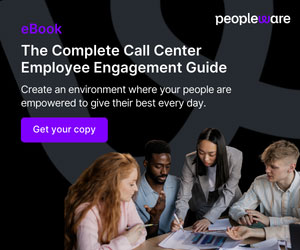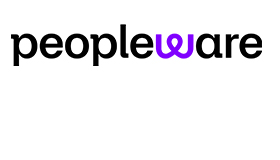Doug Casterton, on behalf of injixo, explains what WFM is all about and why it might just be the secret sauce your business needs.
If you’re wondering whether your business needs a Workforce Management (WFM) system, you’re not alone.
I’ve been in your shoes, pondering the same question. I have even written previously that you can still get a lot done without a WFM system.
But after years of experience in this space, I’ve learned that a good WFM system can be a game-changer and take your Workforce Management to the next level.
What’s the Deal With WFM Systems?
First off, what exactly is a WFM system? Think of it as your business’s Swiss Army knife for managing your workforce. It’s a set of tools and processes that help you optimize how you use your most valuable resource: your people.
At its core, WFM is all about ensuring you have the right people in the right place and time. Sounds simple, right? As anyone who’s tried to juggle staff schedules knows, it’s anything but!
Here’s what a good WFM system typically covers:
- Crystal ball gazing: Okay, not really, but forecasting and planning come pretty close. It’s about predicting how many staff you’ll need based on historical data, trends, and what’s coming up.
- Puzzle-solving: Creating schedules that match your workforce to your workload. It’s like solving a Rubik’s cube but with people’s working lives and your business needs.
- Time-tracking: Keeping tabs on when people are working, taking breaks, or off sick.
- Performance insights: Figuring out who’s knocking it out of the park and who might need a bit of coaching.
- Rule-following: Ensure you’re not accidentally breaking labour laws or company policies.
- Number-crunching: Providing all sorts of data to help you make smarter decisions about your workforce.
The end game? To run your business like a well-oiled machine, keep your costs in check, make your employees happier, and ultimately, deliver better customer service.
Why Should You Care About WFM Systems?
Now, you might be thinking, “Do I really need all this?” Well, let me tell you, the benefits can be pretty sweet:
- Efficiency on steroids: WFM systems automate a ton of tasks that would otherwise eat up your time. Imagine spending less time on spreadsheets and more time on communication, stakeholder management, strategy, and employee engagement.
- Money in the bank: By forecasting accurately and scheduling smartly, you can reduce overstaffing and unnecessary overtime.
- Happy employees, happy lives: Employees with more control over their schedules and a better work-life balance tend to stay longer and do better work.
- Data-driven decisions: No more guesswork. You can make decisions based on facts, not hunches, with real-time insights.
- Stay out of trouble: Compliance with labor laws becomes much easier when you have a system keeping track of everything.
- Customer service that wows: When the right number of people work at the right times, your customers get faster, better service.
- Grow without the growing pains: As your business expands, your WFM system can scale with you, making growth less painful.
Signs You Might Need a WFM System
Okay, so WFM systems sound great, but how do you know if your business needs one?
Here are some telltale signs:
- Your scheduling process is a nightmare: If creating schedules feels like you’re planning a military operation, it might be time for some help.
- Double bookings and no-shows are common: Constantly dealing with scheduling conflicts? A WFM system could be your new best friend.
- You’re flying blind: If you can’t easily see who’s working when or how productive they are, you’re missing out on valuable insights.
- Your employees are grumbling: Frequent complaints about schedules or last-minute changes? That’s a red flag.
- You’re growing fast: As your team expands, manual processes just won’t cut it anymore.
- You’ve got a diverse workforce: Managing full-timers, part-timers, and seasonal workers? A WFM system can handle the complexity.
Choosing the Right WFM System
Alright, so you’re convinced you need a WFM system. But with so many options, how do you choose the right one?
Here’s what to look for:
- User-friendly interface: People won’t use it if it’s not intuitive. It’s as simple as that.
- Mobile-friendly: In today’s world, if it doesn’t work on a smartphone, it might as well not exist.
- Intelligent forecasting and scheduling: The whole point is to make your life easier.
- Time and attendance tracking: Because manually tracking is so last century.
- Analytics that don’t require a PhD: You want insights, not a headache.
- Compliance features: Keeping the legal eagles happy is always a good idea.
- Employee self-service: Let your team manage their own schedules (within reason, of course).
And don’t forget about the future! Look for a system that can grow with your business, play nice with your other software, and won’t become obsolete in a year.
The Future of WFM: It’s Getting Smarter (and Cooler)
I could write more on this subject, but this article is not really about this. Still, the world of WFM is evolving faster than you can say “artificial intelligence.” and when choosing a WFM system, it is worth knowing what’s on the horizon:
- AI and machine learning: Imagine a system that learns from past data to predict your future staffing needs better.
- Predictive analytics: Spotting trends before they become problems? Yes, please!
- Focus on employee experience: Happy employees = happy customers. It’s not rocket science.
- Real-Time Automation: WFM is great at creating the best possible plan. But as any good WFMmer knows, no plan survives contact with the enemy, and when the facts change, the schedule should, too.
The Bottom Line: Do You Need a WFM System?
Look, I’m not here to tell you that every business needs a fancy WFM system. But in today’s fast-paced, ever-changing business world, having the right tools can make all the difference.
If you’re still relying on manual processes and gut feelings to manage your workforce, you might be leaving money on the table.
You’re missing out on opportunities to improve your employees’ lives. A good WFM system isn’t just about cutting costs or increasing efficiency (although it does those things too).
It’s about creating a work environment where people can thrive, customer service is top-notch, and you’re always one step ahead of the competition. So, do you need a WFM system? Only you can answer that.
But if you’re looking to take your business to the next level, it is the secret weapon you’ve been searching for. Remember, at the end of the day, your people are your most valuable asset. Investing in a system that helps you manage them better isn’t just good business – it’s good sense.
This blog post has been re-published by kind permission of Peopleware – View the Original Article
For more information about Peopleware - visit the Peopleware Website
Call Centre Helper is not responsible for the content of these guest blog posts. The opinions expressed in this article are those of the author, and do not necessarily reflect those of Call Centre Helper.
Author: Peopleware
Published On: 15th Aug 2024 - Last modified: 22nd Oct 2024
Read more about - Guest Blogs, Doug Casterton, Peopleware






 Peopleware is the award-winning, multi-channel cloud workforce management application for contact centers and customer support. Over 300 customers, ranging in size from 50 to over 4,000 seats, trust Peopleware to bring work and demand in perfect balance while embracing the constant change in their business. With Peopleware, you spend less time and effort on manual forecasting and scheduling, while maximizing efficiency and focusing on what really matters: your people and customers.
Peopleware is the award-winning, multi-channel cloud workforce management application for contact centers and customer support. Over 300 customers, ranging in size from 50 to over 4,000 seats, trust Peopleware to bring work and demand in perfect balance while embracing the constant change in their business. With Peopleware, you spend less time and effort on manual forecasting and scheduling, while maximizing efficiency and focusing on what really matters: your people and customers.





























